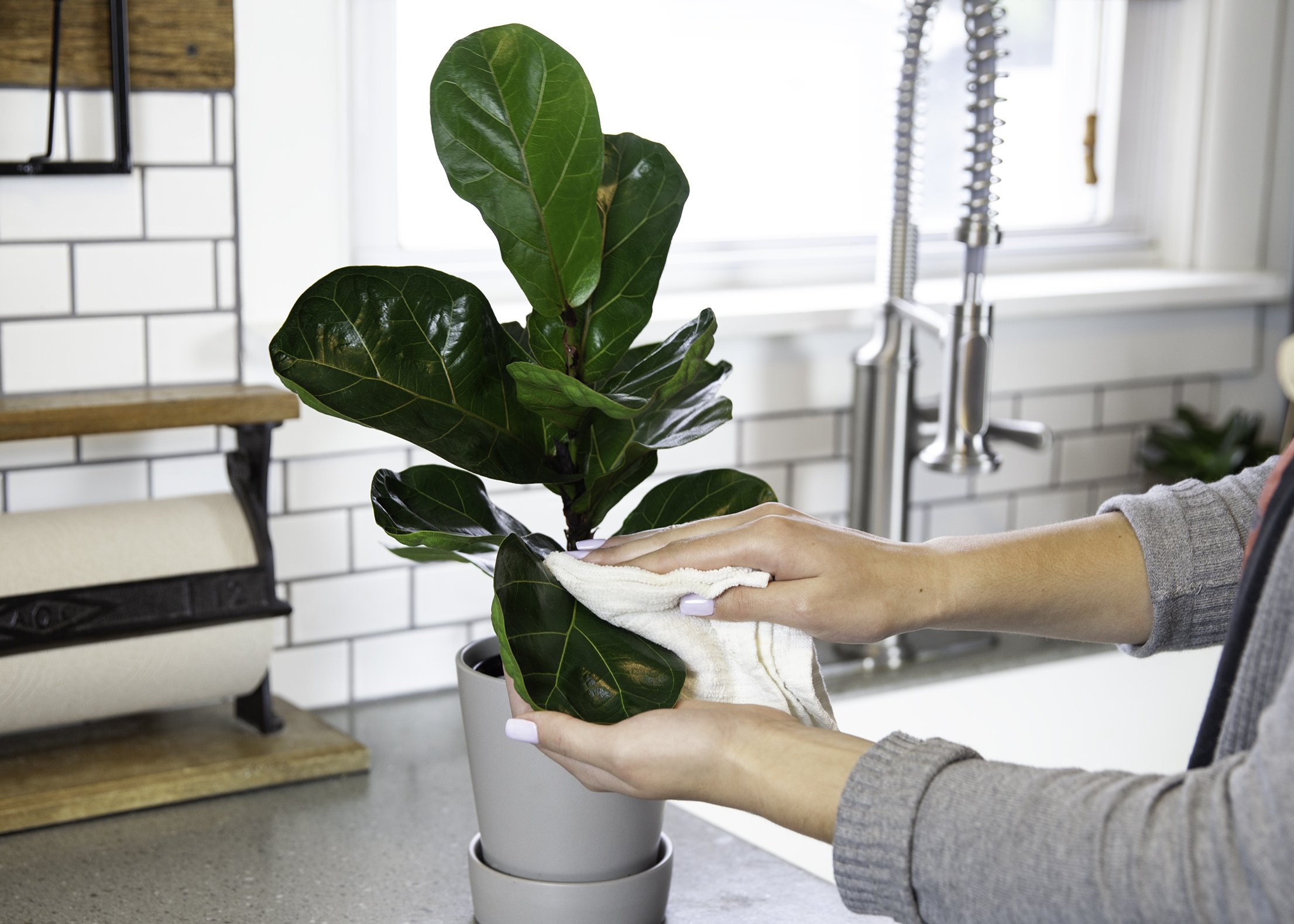How Do I Keep My Plants Clean?
Keeping your home clean is a priority for many of us, whether it’s your kitchen, bathroom or bedroom. It might seem easy to forget, but don’t exclude your plants and their leaves from your routine dusting!
Plants collect dust too, which can inhibit their ability to photosynthesize correctly. Especially on plants with larger, flat leaves, it’s good to give them a wipe down now and then.
Other reasons to dust include:
Dust can create a barrier that traps moisture on the leaf surface, creating a humid environment. This can encourage the growth of fungal diseases, such as powdery mildew, which thrive in moist conditions.
Dust accumulation can block the absorption of essential nutrients from fertilizers or water through the leaf surface. Over time, this can lead to nutrient deficiencies and weaken the plant's overall health.
Dust can carry fungal spores, bacteria, and other pathogens that can infect plants. When dust accumulates on leaves, it can provide a suitable environment for these pathogens to multiply and spread.
First, it’s good to determine how dusty the area is that you keep your plants. If there is more dust, you may need to dust weekly. If it’s a dust-free area, monthly dusting may be enough. Healthy airflow from fans and air filters are great options to help mitigate dust collection on plants. It’s also good to remember that you should try to keep plants away from vents and drafts. Not only can that add to the dust build-up, but it’s not good for keeping the plants in a consistent temperature.
Next, once you’ve determined how dusty your plant is, it’s time to gather what you need. A soft damp cloth, some good quality paper towels, perhaps a spray bottle or two, and an eye to attention. If you have a firm plant, like a ZZ, you could bring it into your sink or shower and spray it off gently with the nozzle in your shower or sink, then pat dry.
If you have a plant with more delicate leaves, you can mist it with a handheld spray bottle instead, then wipe off those leaves carefully. Plants with large leaves, like Fiddle Leaf Figs, tend to gather dust more readily than plants with smaller leaves. Keep this in mind when scheduling out your dusting sessions! In general, be gentle, wipe the dust off of – not into – the plant’s leaves. If you have a large number of plants to clean, remember to change or wring out the cloth you are working with.
You can also avoid using water all-together, if that’s your preference. A small feather duster, or even a can of compressed air can work well to take the dust off the leaves and help them feel refreshed.
You don’t need any special supplies or chemicals for your leaves, water is great to help clean the leaves and won’t interfere with any of the plants’ natural processes either! If you do want to invest in leaf-shining products, we recommend you use them in small amounts. Too much application can clog up the pores on your leaves just as much as dust does!
While you’re dusting, it’s a good idea to make double the use of the time to clean up the rest of the plant’s space; notice any dust or debris in or around the pot? Go ahead and clean that up too. Notice any wilted or dead leaves near the plant’s base? Remove those. It’s a great time to remind yourself that your plant needs your care to thrive, so that shouldn’t stop at watering or dusting its leaves.
What is your plant cleaning schedule like? Do you dust or mist? We’d love to hear about what works for you so we can share more helpful tips with our community.
Leave a comment below or send us a message on social!

